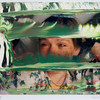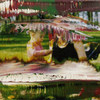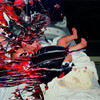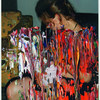A Letter from London: Gerhard Richter and his Overpainted Photographs
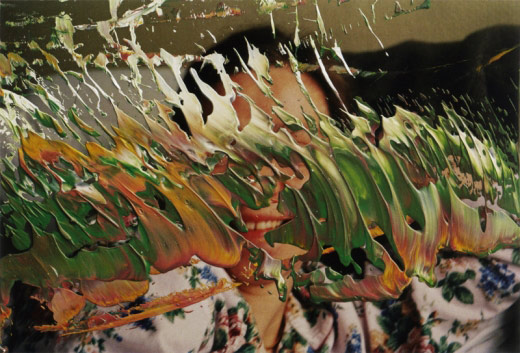
Whilst in conversation with a friend on the new Gerhard Richter exhibition at Tate Modern, he commentated that he believed Gerhard Richter to be the greatest living painter. Without hesitation and before I myself knew what I was saying, I began to correct him; surely he meant the greatest living artist. (more)
To invoke the idea of medium is to bring forward a plethora of critical theory, mainly stemming from Clement Greenberg and expanded upon by Rosalind Krauss. Krauss’ essay ‘“A Voyage on the North Sea” - Art in the Age of the Post-Medium Condition’ is perhaps a good point of reference when looking at this idea. In this text Krauss argued that if painting -or any medium- was to challenge the essence of its own being, i.e. painting and its physicality, it couldn’t be questioning the nature of Art. Here the word Art becomes general, and painting specific.
Once these limitations on medium specificity have been lifted and we are free to discuss each medium within the context of Art, we can begin to look at Gerhard Richter’s ‘Overpainted Photographs’ not as paintings or photographs but objects that address much larger ideas than that of themselves.
In the monumental new exhibition at Tate Modern, Gerhard Richter: Panorama, there are eight of Richter’s overpainted photographs displayed. They are small by comparison to the rest of his works, only a modest and recognisable 6x4inches- the format of the traditional family album, and indeed beneath their painted surfaces these photographs depict intimate moments of family life. They appear unconstructed bearing all the hallmarks of family snapshot spontaneity; the subjects look artless, relaxed and safe in the knowledge that these photographs are for the eyes of a very select few.
Of the eight pictures displayed, three are portraits of the same woman1. Dressed in a floral shirt she appears in one of the pictures with the bridge of her nose and eyes still visible, in another with her chin visible and in the third with her smiling mouth visible -her floral shirt remaining the signifier to her identity. The majority of the rest of her face is obscured by thick smears of various coloured paint. However, it is still possible with the features Richter allows us, to build a complete picture of this woman who by natural association we may accept to be of the Richter family.
Through the stretched blotches of paint it is possible to see that this woman is in bed. Her eyes in one of the pictures are bloodshot as if she has been unwell, or rather speculatively through looking at the other five pictures that include images of a woman with a baby, as if she has just given birth.
To own a camera during such times of nativity is to instinctively turn it to the occasion and document for future reference the specificities of the moment. These universally translatable pictures hold the ability to cross seas and at once be recognised as a shared occasion of humanity. They are deeply personal images taken during a time of profound change for all the people involved; this is photography in one of its purest and most easily translatable forms. Richter’s pictures here touch upon the fundamentals of photography and remind us of its translatory abilities.
Here, however, the images appear plucked from the narrative of the album and go on display to the public. Fragmented by the application of paint they become something quite different. The flat glossy surface of the pictures has been disturbed and each bear the unique marks of the artist’s hand veiling his subjects beneath colours of oil. These seemingly aggressive acts of effacement could perhaps be gestures, reminding the artist even more clearly of the memories roused by that photographic instance. No different to the handwriting on the back of a photograph, these gestural marks appear to be a type of language, addressing only the artist and making these family photographs even more individual. However for us the viewer, who is intruding on this moment of family history, we examine the images in detail and absorption hoping to peer through the cryptic gestures and see the fundamentals of another; never have we looked so closely at a photograph than when it is someone else’s and covered in paint.
~Christopher Thomas (cmlthomas88@yahoo.co.uk)
Gerhard Richter: Panorama is on at the Tate Modern, London until 8th January 2012
1 It is possible the other five images are of this same woman, however it is hard to tell for certain through the obscuring paint.

